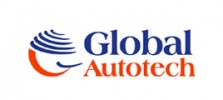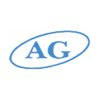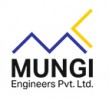Filter interviews by
Shiv Shakti Wahan Mechanical Engineer Interview Questions and Answers
Shiv Shakti Wahan Mechanical Engineer Interview Experiences
1 interview found
(1 Question)
- Q1. How can you describe motor that is using water and kerosene
- Ans.
A motor using water and kerosene is likely a type of internal combustion engine.
It likely uses a mixture of water and kerosene as fuel.
The water helps to cool the engine and reduce emissions.
This type of engine may be used in certain types of boats or generators.
It may also be referred to as a water-injection engine.
Interview Preparation Tips
Top trending discussions






Interview questions from similar companies

Mechanical Engineer Interview Questions & Answers
Ralson Tyres Limitedposted on 27 Feb 2024
I applied via Campus Placement and was interviewed in Jan 2024. There were 2 interview rounds.
Easy normal quesstion basic questions
(5 Questions)
- Q1. Easy questions , 1st law of thermodyanamics, more hr based
- Q2. 1st law thermodyanics
- Q3. What is turbines
- Ans.
Turbines are machines that convert fluid energy into mechanical energy by using a rotor to capture the energy of a moving fluid.
Turbines are commonly used in power plants to generate electricity from steam, water, or wind.
There are different types of turbines such as steam turbines, gas turbines, and wind turbines.
The rotor of a turbine is connected to a shaft which drives a generator to produce electricity.
Turbines ar...
- Q4. What is conduction
- Ans.
Conduction is the transfer of heat or electricity through a material without any movement of the material itself.
Conduction occurs through direct contact between particles in a material.
Materials with high conductivity, like metals, transfer heat or electricity more efficiently.
Examples include a metal spoon getting hot when placed in a hot liquid, or a wire conducting electricity.
Insulators, like rubber or wood, have ...
- Q5. What is convection
- Ans.
Convection is the transfer of heat through a fluid (liquid or gas) by the movement of the fluid itself.
Convection occurs when a fluid is heated, becomes less dense, and rises, while cooler fluid sinks and takes its place.
Examples of convection include boiling water, ocean currents, and atmospheric circulation.
Convection is an important mechanism for heat transfer in many engineering applications.

Junior Mechanical Engineer Interview Questions & Answers
NVH India Auto Partsposted on 1 Sep 2023
I applied via Walk-in and was interviewed before Sep 2022. There were 3 interview rounds.

(1 Question)
- Q1. Self intoduction
(9 Questions)
- Q1. What is your role in previous company
- Q2. How many people under your control and how you will manage
- Q3. How to improve cycle time and how to do rejection control
- Ans.
To improve cycle time, focus on process optimization and efficiency. Rejection control involves identifying root causes of defects and implementing corrective actions.
Implement lean manufacturing principles to streamline processes and reduce waste
Utilize automation and technology to speed up production
Regularly analyze data and performance metrics to identify bottlenecks and areas for improvement
Train employees on best...
- Q4. Do you know about rework anaysis
- Ans.
Rework analysis involves identifying and addressing issues in a product or process to improve efficiency and quality.
Rework analysis is a process of examining and evaluating the reasons for rework in a project or product.
It involves identifying root causes of defects or errors and implementing corrective actions to prevent future rework.
Examples of rework analysis include conducting failure mode and effects analysis (F...
- Q5. Do you know about scrap count
- Ans.
Scrap count refers to the number of defective or unusable parts produced during manufacturing.
Scrap count is an important metric in manufacturing to track quality control and efficiency.
It helps identify areas of improvement in the production process.
Examples of scrap count include parts with manufacturing defects, incorrect dimensions, or damaged during production.
- Q6. Do you know about OEE and how to calculate
- Ans.
OEE stands for Overall Equipment Effectiveness, a measure of how well a manufacturing process is utilized.
OEE is calculated by multiplying Availability, Performance, and Quality percentages.
Availability = (Operating Time / Planned Production Time) * 100
Performance = (Ideal Cycle Time / Total Count) * 100
Quality = (Good Count / Total Count) * 100
OEE = Availability * Performance * Quality
For example, if a machine operate...
- Q7. How to manage production loss
- Ans.
Production loss can be managed by identifying root causes, implementing preventive measures, optimizing processes, and continuously monitoring performance.
Identify root causes of production loss through root cause analysis
Implement preventive measures such as regular maintenance, training programs, and quality control checks
Optimize processes by streamlining workflows, improving efficiency, and reducing waste
Continuous...
- Q8. Do you know about lean manufacturing
- Ans.
Lean manufacturing is a production method aimed at minimizing waste and maximizing efficiency.
Focuses on continuous improvement
Eliminates waste in processes
Involves just-in-time production
Uses tools like value stream mapping and 5S
Promotes employee involvement and empowerment
- Q9. Do you know about autonomous maintenance
- Ans.
Autonomous maintenance is a maintenance strategy where operators are responsible for routine maintenance tasks.
Autonomous maintenance involves operators taking ownership of basic maintenance tasks such as cleaning, lubricating, and inspecting equipment.
The goal of autonomous maintenance is to prevent breakdowns and improve overall equipment effectiveness.
Operators are trained to identify abnormalities and address them ...

Diploma Mechanical Engineer Interview Questions & Answers
Global Autotechposted on 20 Apr 2022
(1 Question)
- Q1. Least count of a vernier caliper, micrometer or steam turbine etc
- Ans.
The least count of a measuring instrument is the smallest value that can be measured with it.
The least count of a vernier caliper is typically 0.02 mm.
The least count of a micrometer is typically 0.01 mm.
The least count of a steam turbine depends on the specific turbine and its design.
Interview Preparation Tips

Junior Mechanical Engineer Interview Questions & Answers
Sun Vacuum Formersposted on 15 Oct 2021
I applied via campus placement at Board of Technical Education (BTE) and was interviewed in Sep 2021. There were 3 interview rounds.
Interview Questionnaire
2 Questions
- Q1. Department related question
- Q2. Department for it questions
Interview Preparation Tips

I applied via campus placement at Indo Danish Tool Room, Jamshedpur and was interviewed in Jan 2021. There was 1 interview round.
Interview Questionnaire
2 Questions
- Q1. About the cv and about machines?
- Q2. About measuring instruments and gauges.?
Interview Preparation Tips

Mechanical Engineer Interview Questions & Answers
Ralson Tyres Limitedposted on 12 Mar 2024
I applied via Campus Placement and was interviewed before Mar 2023. There was 1 interview round.
(1 Question)
- Q1. How many types of tryer ?
- Ans.
There are two main types of tryer: single tryer and double tryer.
Single tryer is used for determining the moisture content of a sample by drying it in an oven.
Double tryer is used for determining the moisture content of a sample by drying it in a controlled environment with a balance to measure weight loss.
The choice of tryer depends on the specific requirements of the analysis being performed.
Interview Preparation Tips

Assistant Engineer Mechanical Interview Questions & Answers
Global Autotechposted on 3 Nov 2021
Interview Questionnaire
1 Question
- Q1. Jobs of assistant engineer
Interview Preparation Tips

Mechanical Engineer Interview Questions & Answers
Ralson Tyres Limitedposted on 27 Feb 2024
I applied via Campus Placement and was interviewed in Jan 2024. There were 2 interview rounds.
Easy normal quesstion basic questions
(5 Questions)
- Q1. Easy questions , 1st law of thermodyanamics, more hr based
- Q2. 1st law thermodyanics
- Q3. What is turbines
- Ans.
Turbines are machines that convert fluid energy into mechanical energy by using a rotor to capture the energy of a moving fluid.
Turbines are commonly used in power plants to generate electricity from steam, water, or wind.
There are different types of turbines such as steam turbines, gas turbines, and wind turbines.
The rotor of a turbine is connected to a shaft which drives a generator to produce electricity.
Turbines ar...
- Q4. What is conduction
- Ans.
Conduction is the transfer of heat or electricity through a material without any movement of the material itself.
Conduction occurs through direct contact between particles in a material.
Materials with high conductivity, like metals, transfer heat or electricity more efficiently.
Examples include a metal spoon getting hot when placed in a hot liquid, or a wire conducting electricity.
Insulators, like rubber or wood, have ...
- Q5. What is convection
- Ans.
Convection is the transfer of heat through a fluid (liquid or gas) by the movement of the fluid itself.
Convection occurs when a fluid is heated, becomes less dense, and rises, while cooler fluid sinks and takes its place.
Examples of convection include boiling water, ocean currents, and atmospheric circulation.
Convection is an important mechanism for heat transfer in many engineering applications.

Mechanical Maintenance Engineer Interview Questions & Answers
Ralson Tyres Limitedposted on 11 Aug 2023
I applied via Campus Placement and was interviewed in Jul 2023. There were 4 interview rounds.

(1 Question)
- Q1. Types of engine and whatis that
- Ans.
Types of engines include internal combustion engines, steam engines, and electric engines.
Internal combustion engines: gasoline, diesel, rotary, etc.
Steam engines: used in locomotives, ships, and industrial settings.
Electric engines: used in electric vehicles, trains, and some aircraft.
(1 Question)
- Q1. About your life and your family .
(1 Question)
- Q1. About your knowledge test
Shiv Shakti Wahan Interview FAQs
Tell us how to improve this page.
Interview Questions for Popular Designations
- Mechanical Maintenance Engineer Interview Questions
- Diploma Mechanical Engineer Interview Questions
- Mechanical Technician Interview Questions
- Senior Engineer Mechanical Interview Questions
- Mechanical Supervisor Interview Questions
- Junior Mechanical Engineer Interview Questions
- Mechanical Fitter Interview Questions
- Mechanical Maintenance Fitter Interview Questions
- Show more
Interview Questions from Similar Companies
Shiv Shakti Wahan Mechanical Engineer Reviews and Ratings
based on 1 review
Rating in categories
|
Sales Executive
5
salaries
| ₹0.8 L/yr - ₹2.2 L/yr |
|
Manager - CRM
5
salaries
| ₹2.4 L/yr - ₹3.2 L/yr |
|
Field Sales Consultant
5
salaries
| ₹1 L/yr - ₹2 L/yr |
|
HR Manager
4
salaries
| ₹4.1 L/yr - ₹4.8 L/yr |
|
Service Manager
4
salaries
| ₹2.8 L/yr - ₹3.8 L/yr |

Ag Industries

Global Autotech

Ralson Tyres Limited

Mungi Group
Calculate your in-hand salary
- Home >
- Interviews >
- Shiv Shakti Wahan Interview Questions >
- Shiv Shakti Wahan Mechanical Engineer Interview Questions





